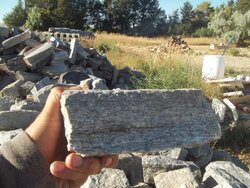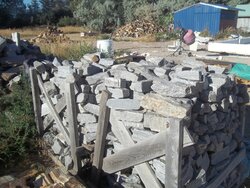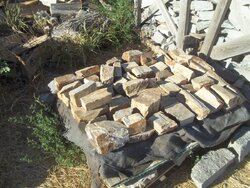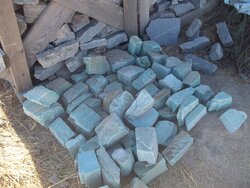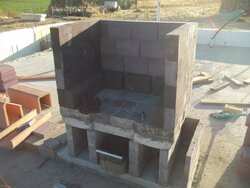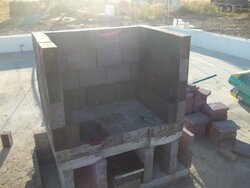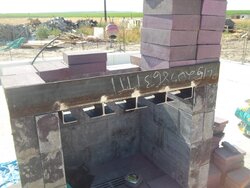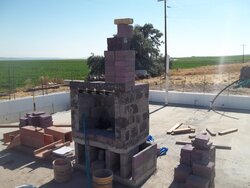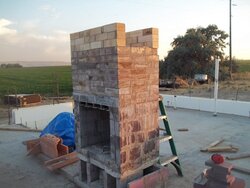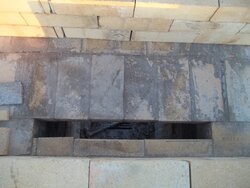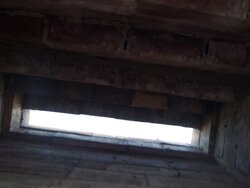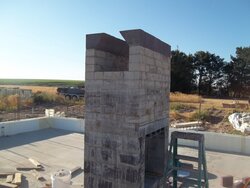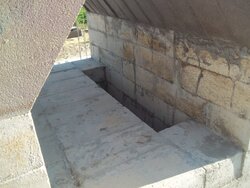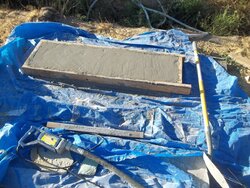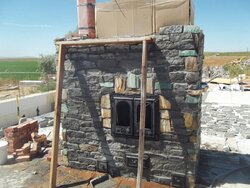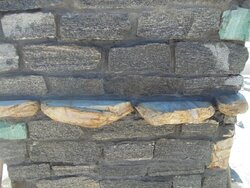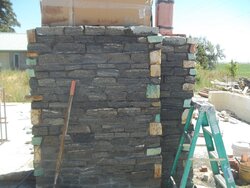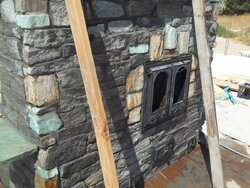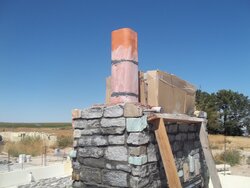Well I've started building a masonry heater. I have almost everything I need (maybe need some more refractory cement). I've complicated things for myself - the door is too big for the plans I have, 70% of the firebrick are sloped (think of a pyramid), and the 80 or so straight bricks are really really dense - 20 pounds per brick (6"x9"x3"). And all of the bricks are bigger than standard.
The brick (the dark ones are straights, lighter 1/4" sloped),
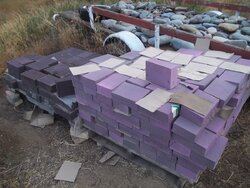
I rented a brick saw and split 80 firebricks and took the slope off 2 sides and one side of 80 more - so I've got a mixture of brick. I tried to cut the dense bricks and it was a problem. I will need to be patient with these. So I could use the door, I increased the plans a little bit, 4" wider & 2" deeper. Oddly the bigger bricks span the firebox floor in one direction without needing to be cut - I didn't plan it.
I've built the under the firebox area. And I have the refractory cement base to put on top of it. Problem - it weighs a lot. I stacked the base on some blocks and thought maybe I could just slide it over - no good. I am going to need help. It has to be placed straight down. Here it is. I threw a few bricks on top of the base to see what the firebox would look like and the dimensions of it (~26" wide).
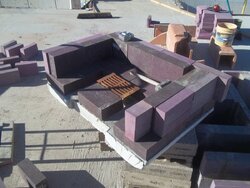
The below firebox area,
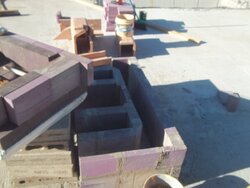
This heater is going to be massive for it's size. It is sitting on 21" of reinforced concrete. The amount of mass to move is striking.
The brick (the dark ones are straights, lighter 1/4" sloped),

I rented a brick saw and split 80 firebricks and took the slope off 2 sides and one side of 80 more - so I've got a mixture of brick. I tried to cut the dense bricks and it was a problem. I will need to be patient with these. So I could use the door, I increased the plans a little bit, 4" wider & 2" deeper. Oddly the bigger bricks span the firebox floor in one direction without needing to be cut - I didn't plan it.
I've built the under the firebox area. And I have the refractory cement base to put on top of it. Problem - it weighs a lot. I stacked the base on some blocks and thought maybe I could just slide it over - no good. I am going to need help. It has to be placed straight down. Here it is. I threw a few bricks on top of the base to see what the firebox would look like and the dimensions of it (~26" wide).

The below firebox area,

This heater is going to be massive for it's size. It is sitting on 21" of reinforced concrete. The amount of mass to move is striking.
Last edited:


